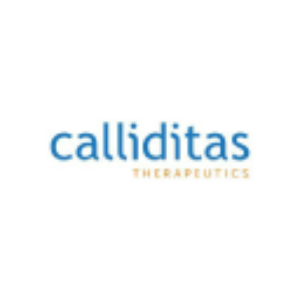Calliditas Therapeutics Presents Additional Data Analyses from the Phase 3 NeflgArd trial of Nefecon in Primary IgA Nephropathy at the ISN World Congress of Nephrology 2024
"We were pleased to share additional analyses from the 2-year Phase 3 NeflgArd trial of Nefecon in IgAN at this year's World Congress of Nephrology," said Richard Philipson, Chief Medical Officer of Calliditas. "These additional data further reinforce the impact of Nefecon across the entire study population, irrespective of baseline UPCR levels or patient's racial and ethnic backgrounds."
Poster presentation details are below and will be available on the Presentations and Publications page on the Calliditas' corporate website following the meeting.
Poster Presentation Analyses:
Poster Title: "Nefecon treatment provides kidney benefits for patients with IgAN that extend to those with low levels of UPCR: A sub-analysis of the phase III NefIgArd trial"
An extended analysis of patients with baseline UPCR levels above and below 0.8 g/g was performed to further explore the potential benefits of Nefecon. In the full analysis involving 364 patients regardless of baseline UPCR, Nefecon treatment consistently improved the estimated glomerular filtrate rate (eGFR) over the 2-year study period compared to placebo. 72 patients with a baseline UPCR <0.8 g/g experienced sustained eGFR improvement (p=0.0026), which persisted for up to 18 months after treatment initiation, even after the treatment cessation at month 9. Those patients also achieved an eGFR slope of -0.25 mL/min/1.73 m2 per year, indicating that Nefecon treatment may support them in reaching the RaDaR treatment target of an eGFR decline of <1 mL/min/1.73 m2 per year. This objective is pivotal in mitigating the risk of kidney failure in their lifetime.
Poster Title: "eGFR decline in patients with IgAN treated with Nefecon or placebo: Results from the 2-year NefIgArd Phase 3 trial"
During the 9-month treatment period, Nefecon showed a
Poster Title: Nefecon effect on quality of life in patients with IgAN: SF-36 results from the Phase 3 NefIgArd trial"
The 2-year results of quality of life (QoL) analyses based on 36-Item Short Form Survey (SF-36) assessments at 9 and 24 months revealed no meaningful differences in any QoL domain between Nefecon and placebo groups after 9 months of treatment. These SF-36 scores remained consistent after 15 months of off-drug observational follow-up further supporting the benefit/risk profile of Nefecon.
Poster Title: "Nefecon treatment response in Asian and White patient populations with immunoglobulin A nephropathy: A 2-year analysis of the Phase 3 NefIgArd trial"
The responses to Nefecon treatment from the full 2-year NefIgArd trial were assessed in patients identifying as Asian (n=83) or White (n=275). Regardless of race and ethnicity, Nefecon showed a favorable change in eGFR compared to placebo of 5.5 mL/min/1.73 m2 in Asian patients and 4.8 mL/min/1.73 m2 in White patients. Nefecon also demonstrated greater reductions in UPCR at 9 and 24 months with notable delays in kidney function decline events. These effects were consistent across races and ethnicities. Additionally, Nefecon significantly reduced the rate of microhematuria in both Asian and White patients. Overall, these findings highlight Nefecon's efficacy and tolerability across different racial and ethnic groups.
Indication
TARPEYO is indicated to reduce the loss of kidney function in adults with primary immunoglobulin A nephropathy (IgAN) who are at risk for disease progression.
Important Safety Information
Contraindications: TARPEYO is contraindicated in patients with hypersensitivity to budesonide or any of the ingredients of TARPEYO. Serious hypersensitivity reactions, including anaphylaxis, have occurred with other budesonide formulations.
Warnings and Precautions
Hypercorticism and adrenal axis suppression: When corticosteroids are used chronically, systemic effects such as hypercorticism and adrenal suppression may occur. Corticosteroids can reduce the response of the hypothalamus-pituitary-adrenal (HPA) axis to stress. In situations where patients are subject to surgery or other stress situations, supplementation with a systemic corticosteroid is recommended. When discontinuing therapy or switching between corticosteroids, monitor for signs of adrenal axis suppression.
Patients with moderate to severe hepatic impairment (Child-Pugh Class B and C respectively) could be at an increased risk of hypercorticism and adrenal axis suppression due to an increased systemic exposure to oral budesonide. Avoid use in patients with severe hepatic impairment (Child-Pugh Class C). Monitor for increased signs and/or symptoms of hypercorticism in patients with moderate hepatic impairment (Child-Pugh Class B).
Risks of immunosuppression: Patients who are on drugs that suppress the immune system are more susceptible to infection than healthy individuals. Chickenpox and measles, for example, can have a more serious or even fatal course in susceptible patients or patients on immunosuppressive doses of corticosteroids. Avoid corticosteroid therapy in patients with active or quiescent tuberculosis infection; untreated fungal, bacterial, systemic viral, or parasitic infections, or ocular herpes simplex. Avoid exposure to active, easily transmitted infections (e.g., chicken pox, measles). Corticosteroid therapy may decrease the immune response to some vaccines.
Other corticosteroid effects: TARPEYO is a systemically available corticosteroid and is expected to cause related adverse reactions. Monitor patients with hypertension, prediabetes, diabetes mellitus, osteoporosis, peptic ulcer, glaucoma or cataracts, or with a family history of diabetes or glaucoma, or with any other condition where corticosteroids may have unwanted effects.
Adverse reactions: In clinical studies, the most common adverse reactions with TARPEYO (occurring in ≥
Drug interactions: Budesonide is a substrate for CYP3A4. Avoid use with potent CYP3A4 inhibitors, such as ketoconazole, itraconazole, ritonavir, indinavir, saquinavir, erythromycin, and cyclosporine. Avoid ingestion of grapefruit juice with TARPEYO. Intake of grapefruit juice, which inhibits CYP3A4 activity, can increase the systemic exposure to budesonide.
Use in specific populations
Pregnancy: The available data from published case series, epidemiological studies, and reviews with oral budesonide use in pregnant women have not identified a drug-associated risk of major birth defects, miscarriage, or other adverse maternal or fetal outcomes. There are risks to the mother and fetus associated with IgAN. Infants exposed to in-utero corticosteroids, including budesonide, are at risk for hypoadrenalism.
Please see Full Prescribing Information.
About TARPEYO
TARPEYO is an oral 4mg delayed release formulation of budesonide, designed to remain intact until it reaches the ileum. Each capsule contains coated beads of budesonide that target mucosal B-cells present in the ileum, including the Peyer's patches, which are responsible for the production of galactose-deficient IgA1 antibodies (Gd-Ag1) causing IgA nephropathy.
About the NeflgArd Study
NefIgArd was a global, Phase 3, randomized, double-blind, placebo-controlled, multicenter study to evaluate the efficacy and safety of TARPEYO 16 mg once daily vs placebo in adult patients with primary IgAN (N=364) as an addition to optimized RASi therapy. Patients were randomized 1:1 to receive 16 mg/day oral capsules of TARPEYO or matching placebo for 9 months, followed by a 15-month observational follow-up period without the study drug.
The primary efficacy endpoint was time-weighted average of eGFR over 2 years. The time-weighted average of eGFR over 2 years showed a statistically significant treatment benefit with TARPEYO versus placebo (difference 5•05 mL/min per 1•73 m² [
The favorable effect of TARPEYO on eGFR was seen by Month 3 (the earliest assessment) and did not appear to increase in magnitude over two years. At the end of Year 2, there was a 5.9 mL/min/1.73 m2 difference in the mean change from baseline in eGFR between TARPEYO and placebo (
The most common adverse reactions with TARPEYO (occurring in ≥
About Primary Immunoglobulin A Nephropathy
Primary immunoglobulin A nephropathy (IgA nephropathy or IgAN or Berger's Disease) is a rare, progressive, chronic autoimmune disease that attacks the kidneys and occurs when galactose-deficient IgA1 is recognized by autoantibodies, creating IgA1 immune complexes that become deposited in the glomerular mesangium of the kidney.This deposition in the kidney can lead to progressive kidney damage and potentially a clinical course resulting in end- stage renal disease. IgAN most often develops between late teens and late 30s.
For further information, please contact:
Åsa Hillsten, Head of IR & Sustainability, Calliditas
Tel : +46 76 403 35 43, Email : asa.hillsten@calliditas.com
The information was sent for publication, through the agency of the contact persons set out above, on April 18, 2023, at 13.00 p.m. CET.
This information was brought to you by Cision http://news.cision.com
The following files are available for download:
PR_CALT-WCN_ENG |
SOURCE Calliditas Therapeutics







